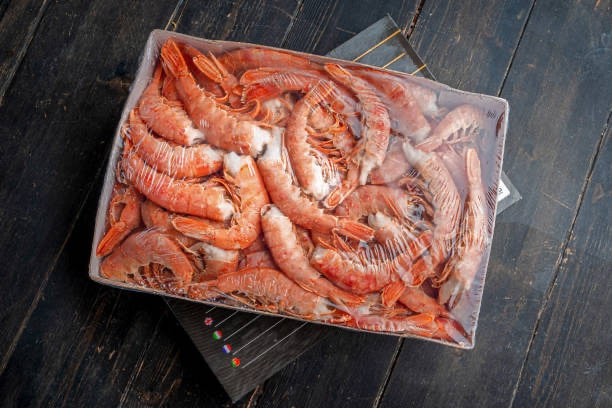
The mind of a fruit fly is the dimensions of a poppy seed and about as simple to miss.
“Most individuals, I feel, don’t even consider the fly as having a mind,” stated Vivek Jayaraman, a neuroscientist on the Janelia Analysis Campus of the Howard Hughes Medical Institute in Virginia. “However, in fact, flies lead fairly wealthy lives.”
Flies are able to refined behaviors, together with navigating various landscapes, tussling with rivals and serenading potential mates. And their speck-size brains are tremendously advanced, containing some 100,000 neurons and tens of hundreds of thousands of connections, or synapses, between them.
Since 2014, a staff of scientists at Janelia, in collaboration with researchers at Google, have been mapping these neurons and synapses in an effort to create a complete wiring diagram, also called a connectome, of the fruit fly mind.
The work, which is constant, is time-consuming and costly, even with the assistance of state-of-the-art machine-learning algorithms. However the knowledge they’ve launched to this point is gorgeous in its element, composing an atlas of tens of 1000’s of gnarled neurons in lots of essential areas of the fly mind.
And now, in an enormous new paper, being printed on Tuesday within the journal eLife, neuroscientists are starting to indicate what they’ll do with it.
By analyzing the connectome of only a small a part of the fly mind — the central advanced, which performs an vital function in navigation — Dr. Jayaraman and his colleagues recognized dozens of latest neuron varieties and pinpointed neural circuits that seem to assist flies make their manner by means of the world. The work may finally assist present perception into how every kind of animal brains, together with our personal, course of a flood of sensory data and translate it into applicable motion.
It’s also a proof of precept for the younger discipline of recent connectomics, which was constructed on the promise that developing detailed diagrams of the mind’s wiring would pay scientific dividends.
“It’s actually extraordinary,” Dr. Clay Reid, a senior investigator on the Allen Institute for Mind Science in Seattle, stated of the brand new paper. “I feel anybody who seems to be at it’s going to say connectomics is a software that we’d like in neuroscience — full cease.”
‘Your fly mind is cooked’
The one full connectome within the animal kingdom belongs to the standard roundworm, C. elegans. The pioneering biologist Sydney Brenner, who would later go on to win a Nobel Prize, began the challenge within the Nineteen Sixties. His small staff spent years on it, utilizing coloured pens to hint all 302 neurons by hand.
“Brenner realized that to know the nervous system you needed to know its construction,” stated Scott Emmons, a neuroscientist and geneticist at Albert Einstein School of Medication, who later used digital strategies to create new C. elegans connectomes. “And that’s true throughout biology. Construction is so vital.”
Brenner and his colleagues printed their landmark paper, which clocked in at 340 pages, in 1986.
However the discipline of recent connectomics didn’t take off till the 2000s, when advances in imaging and computing lastly made it possible to map the connections in bigger brains. In recent times, analysis groups around the globe have began assembling connectomes of zebrafish, songbirds, mice, people and extra.
When the Janelia Analysis Campus opened in 2006, Gerald Rubin, its founding director, set his sights on the fruit fly. “I don’t need to offend any of my worm colleagues, however I feel flies are the only mind that really does fascinating, advanced habits,” Dr. Rubin stated.
A number of totally different groups at Janelia have launched into fly connectome initiatives within the years since, however the work that led to the brand new paper started in 2014, with the mind of a single, five-day-old feminine fruit fly.
Researchers minimize the fly mind into slabs after which used a method often known as focused-ion beam scanning electron microscopy to picture them, layer by painstaking layer. The microscope primarily functioned like a really tiny, very exact nail file, submitting away an exceedingly skinny layer of the mind, snapping an image of the uncovered tissue after which repeating the method till nothing remained.
“You’re concurrently imaging and chopping off little slices of the fly mind, in order that they don’t exist after you’re performed,” Dr. Jayaraman stated. “So for those who screw one thing up, you’re performed. Your goose is cooked — or your fly mind is cooked.”
The staff then used laptop imaginative and prescient software program to sew the hundreds of thousands of ensuing photographs again collectively right into a single, three-dimensional quantity and despatched it off to Google. There, researchers used superior machine-learning algorithms to establish every particular person neuron and hint its twisting branches.
Lastly, the Janelia staff used extra computational instruments to pinpoint the synapses, and human researchers proofread the computer systems’ work, correcting errors and refining the wiring diagrams.
Final 12 months, the researchers published the connectome for what they called the “hemibrain,” a big portion of the central fly mind, which incorporates areas and constructions which might be essential for sleep, studying and navigation.
The connectome, which is accessible free on-line, consists of about 25,000 neurons and 20 million synapses, excess of the C. elegans connectome.
“It’s a dramatic scaling up,” stated Cori Bargmann, a neuroscientist on the Rockefeller College in New York. “This can be a large step towards the purpose of figuring out the connectivity of the mind.”
Welcome to orientation
As soon as the hemibrain connectome was prepared, Dr. Jayaraman, an skilled on the neuroscience of fly navigation, was desirous to dive into the information on the central advanced.
The mind area, which incorporates almost 3,000 neurons and is current in all bugs, helps flies construct an inner mannequin of their spatial relationship to the world after which choose and execute behaviors applicable for his or her circumstances, corresponding to looking for meals when they’re hungry.
“You’re telling me you can provide me the wiring diagram for one thing like this?” Dr. Jayaraman stated. “That is higher industrial espionage than you can get by getting insights into the Apple iPhone.”
He and his colleagues pored over the connectome knowledge, finding out how the area’s neural circuits had been put collectively.
As an illustration, Hannah Haberkern, a postdoctoral affiliate in Dr. Jayaraman’s lab, analyzed the neurons that ship sensory data to the ellipsoid physique, a doughnut-shape construction that acts as the fly’s internal compass.
Dr. Haberkern discovered that neurons which might be identified to transmit details about the polarization of sunshine — a worldwide environmental cue that many animals use for navigation — made extra connections to the compass neurons than did neurons that transmit details about different visible options and landmarks.
The neurons devoted to polarization of sunshine additionally connect with — and are able to strongly inhibiting — mind cells that present details about different navigational cues.
The researchers hypothesize that fly brains could also be wired to prioritize details about the worldwide surroundings when they’re navigating — but in addition that these circuits are versatile, in order that when such data is insufficient, they’ll pay extra consideration to native options of the panorama. “They’ve all these fallback methods,” Dr. Haberkern stated.
Fruit fly telephone house
Different members of the analysis staff recognized particular neural pathways that appear effectively suited to serving to the fly maintain monitor of its head and physique orientation, anticipate its future orientation and touring course, calculate its present orientation relative to a different desired location after which transfer in that course.
Think about, as an illustration, {that a} hungry fly quickly abandons a rotting banana to see whether or not it could rustle up one thing higher. However after a (actually) fruitless jiffy of exploration, it needs to return to its earlier meal.
The connectome knowledge means that sure mind cells, technically often known as PFL3 neurons, assist the fly pull off this maneuver. These neurons obtain two essential inputs: They get indicators from neurons that monitor the course the fly is going through in addition to from neurons which may be preserving tabs on the course of the banana.
After receiving these indicators, the PFL3 neurons then ship out their very own message to a set of turning neurons that immediate the fly to veer off within the right course. Dinner is served, once more.
“With the ability to hint that exercise by means of that circuit — from sensory again to motor by means of this advanced intermediate circuit — is absolutely wonderful,” stated Brad Hulse, a analysis scientist in Dr. Jayaraman’s lab who led this a part of the evaluation. The connectome, he added, “confirmed us much more than we thought it was going to.”
And the group’s paper — a draft of which incorporates 75 figures and stretches to 360 pages — is only the start.
“It simply actually offers this floor fact for exploring this mind area additional,” stated Stanley Heinze, an skilled on insect neuroscience at Lund College in Sweden. “It’s simply enormously spectacular.”
And simply plain monumental. “I wouldn’t actually deal with it as a paper however extra as a ebook,” Dr. Heinze stated.
The truth is, the paper is so giant that the preprint server bioRxiv initially declined to publish it, maybe as a result of the directors — understandably — thought it really was a ebook, Dr. Jayaraman stated. (The server finally did submit the examine, after a number of further days of processing, he famous.)
The paper’s publication within the journal eLife “required some particular permissions and back-and-forth with editorial workers,” Dr. Jayaraman added.
Fly-ing classes
There are limitations to what a snapshot of a single mind at a single second in time can reveal, and connectomes don’t seize the whole lot of curiosity in an animal mind. (Janelia’s hemibrain connectome omits glial cells, as an illustration, which carry out all types of vital duties within the mind.)
Dr. Jayaraman and his colleagues harassed that they might not have been capable of infer a lot from the connectome if not for many years of prior analysis, by many different scientists, into fruit fly habits and fundamental neuron physiology and performance, in addition to theoretical neuroscience work.
However the wiring diagrams may also help researchers examine present theories and generate higher hypotheses, determining what inquiries to ask and which experiments to conduct.
“Now what we’re actually enthusiastic about is taking these concepts that the connectome impressed and going again to the microscope, going again to our electrodes and truly recording the mind and seeing if these concepts are true,” Dr. Hulse stated.
In fact, one may — and a few have — requested why a fruit fly’s mind circuitry issues.
“I get requested this on the holidays so much,” Dr. Hulse stated.
Flies should not mice or chimps or people, however their brains carry out a number of the identical fundamental duties. Understanding the fundamental neural circuitry in an insect may present vital clues to how different animal brains strategy comparable issues, stated David Van Essen, a neuroscientist at Washington College in St. Louis.
Gaining a deep understanding of the fly’s mind “additionally provides us insights which might be very related to the understanding of mammalian, and even human, brains and habits,” he stated.
Creating connectomes of bigger, extra advanced brains might be enormously difficult. The mouse mind incorporates roughly 70 million neurons, the human mind a whopping 86 billion.
However the central advanced paper is decidedly not a one-off; detailed research of regional mouse and human connectomes are at the moment within the pipeline, Dr. Reid stated: “There’s much more to return.”
Journal editors, think about yourselves warned.




